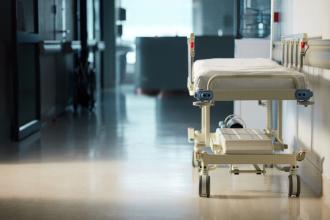Use of disease dynamic modeling to inform the COVID-19 response in BC
British Columbia uses data and analytics to inform its response for tackling COVID-19. Mathematical modeling is one of the tools in our response. Mathematical modeling of infectious diseases allows us to study the spread of an epidemic and understand the potential impact of interventions. BC has been using mathematical modeling to illustrate what could happen to case counts under different conditions. Following are some examples of mathematical modeling of COVID-19 in BC.
Resuming in-class instruction in schools for the end of the school year
School benefits children in many ways, contributing to their overall mental health and providing opportunities for social connection and learning, and spaces for healthy eating and exercise. Therefore, reopening schools safely before the summer was a top priority.
Modeling illustrated that getting children back in school for the month of June would have little impact on the overall course of the epidemic in BC. These models incorporated local data on interactions between children and adults in BC, as well as emerging evidence that children are less likely to pass the infection on to other children or adults. Our modeling, in combination with data from around the world, supported the return of students to in-class learning in BC.
Monitoring the growth potential of the epidemic
To measure how a disease is spreading in a population, scientists track over time how many other people are likely to become infected from a single case. This is called the effective reproductive rate or Rt.
Before any measures were implemented in March, models showed that each person with COVID-19 was infecting nearly three other people. Through the spring, BC reduced that number down to well below one, the threshold of epidemic control. Measures included extensive testing leading to early diagnosis and isolation of cases, thorough contact tracing and quarantine, and measures to reduce crowding and contact with others. It was this reduction in Rt that flattened our curve.
As the pandemic progresses, Rt will continue to be monitored along with other indicators to assess COVID-19 transmission in the community [Figure].
Contact tracing to help ensure that transmission stays low
Contact tracing plays a key role in disease control by quickly identifying people who may have been exposed to the virus. These people are asked to stay home so they do not spread COVID-19 to others if they do become sick.
Modeling illustrates that as physical distancing measures relax and usual interactions resume, BC can help keep the reproductive rate below one through quick and complete contact tracing. This will help ensure that infected individuals do not pass COVID-19 on to others. British Columbians can support contact tracing by getting tested and staying home when they develop mild symptoms. Testing and self-isolation for those who feel sick will continue to be important for controlling COVID-19, particularly in schools and workplaces.
—Michael Otterstatter, MSc, PhD
Senior Scientist and Epidemiologist, BCCDC
Assistant Clinical Professor, School of Population and Public Health, UBC
—David Patrick, MD, FRCPC, MHSc
Director of Research and Medical Epidemiology Lead for Antimicrobial Resistance, BCCDC
Professor, School of Population and Public Health, UBC
—Kate Smolina, PhD
Director of the BC Observatory for Population and Public Health
Adjunct Professor, School of Population and Public Health, UBC
—Reka Gustafson, MD, CCFPC
Vice President, Public Health and Wellness
Deputy Provincial Health Officer
—Naveed Janjua, MBBS, DrPH
Executive Director of Data and Analytic Services, BCCDC
Clinical Associate Professor, School of Population and Public Health, UBC
hidden
This article is the opinion of the BC Centre for Disease Control and has not been peer reviewed by the BCMJ Editorial Board.

